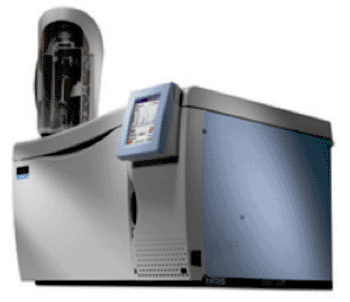Bladder Cancer Sniffed Out by Urine Tester
By LabMedica International staff writers
Posted on 22 Jul 2013
A device has been developed that can help diagnose the early stages of bladder cancer by analyzing the gas emitted from urine.Posted on 22 Jul 2013
The device analyzes the chemicals in the urine odor or headspace and produces a profile readout that shows whether cancer cells are present in the bladder.

Image: Clarus 500 gas chromatograph (Photo courtesy of PerkinElmer).
Scientists at the University of Liverpool (UK) fabricated a new simple in-house gas chromatography (GC)-sensor device and evaluated it in the diagnosis of bladder cancer based on volatiles. A total of 98 male patients, aged 27 to 91 years, were recruited from urology clinics. There were 24 with bladder cancer and 74 controls, who were patients undergoing investigation for symptoms of bladder outflow obstruction and or hematuria.
The presence of specific volatile organic compounds (VOCs) in the gas emitted from urine samples was analyzed using the in-house fabricated sensor system, called the Odoreader. This consisted of the Clarus 500 gas chromatography oven (PerkinElmer; Waltham, MA, USA) fitted with a commercially available capillary column (Sigma Aldrich; Dorset, UK) which was interfaced to a metal oxide sensor heated to 450 °C that was used as the detector. Additional assistance in evaluating the device was provided by investigators from the University of the West of England (Bristol, UK).
Analysis of the chromatograms showed that 83.3% of bladder cancer samples had a measurable peak in a specific region. In the control samples, peaks in that region of the spectra were predominantly absent. Sensor outputs were analyzed using two different, independent data analysis techniques each of which showed significant discrimination of samples from patients with and without bladder cancer. The identity of the VOCs that contribute to the biomarker profile has yet to be determined. Their characterization may be defined in future work using gas chromatography mass spectrometry techniques and this will provide further insight into bladder cancer induced biochemical changes.
Christopher S. Probert, MD, a senior author of the study said, “Bladder cancer is a disease that, if caught early, can be treated effectively, but unfortunately we do not have any early screening methods other than diagnosis through urine tests at the stage when it starts to become a problem. We have developed a device that can give us a profile of the odor in urine. It reads the gases that chemicals in the urine can give off when the sample is heated.” The study was published on July 8, 2013, in the journal Public Library of Science ONE.
Related Links:
University of Liverpool
PerkinElmer
Sigma Aldrich














